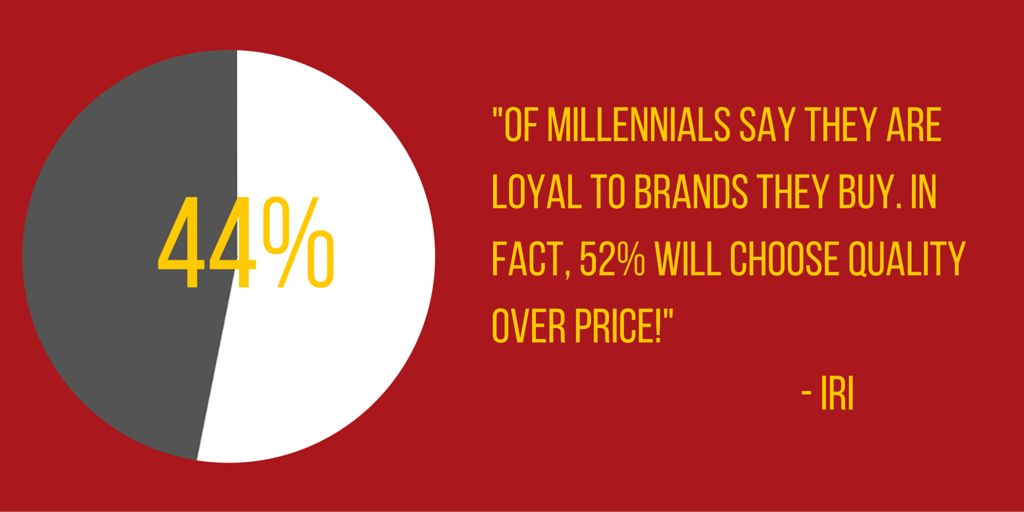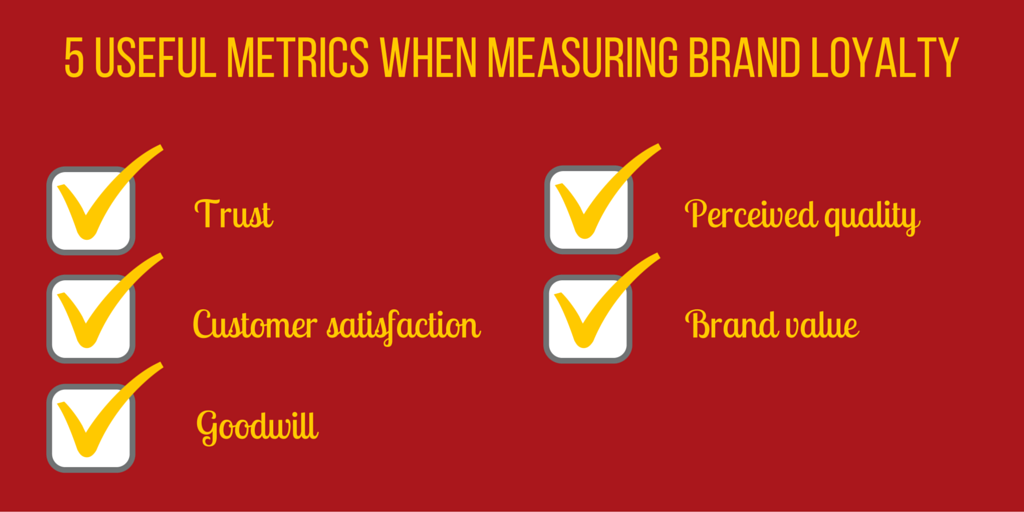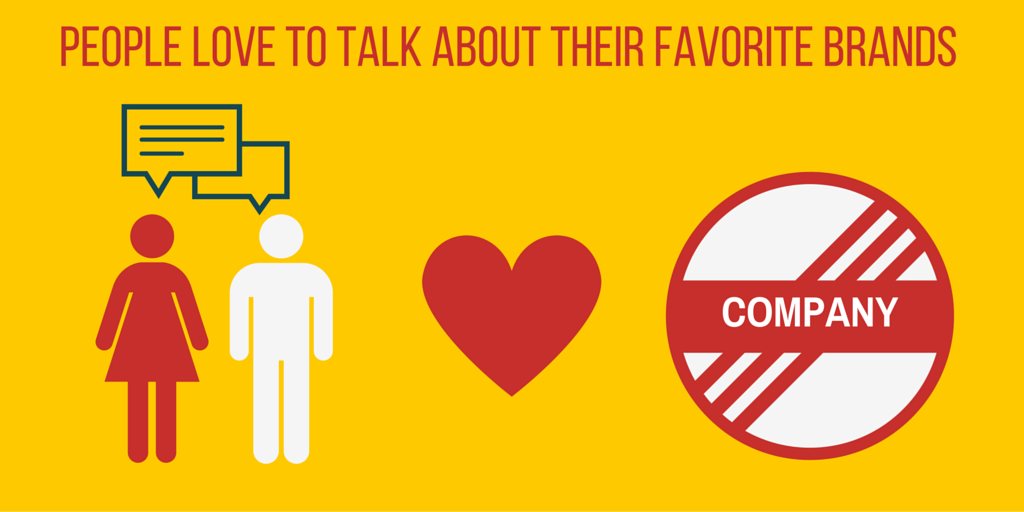Improve how you measure loyalty with surveys
The first thing people think of when they hear your name or when they come across your logo or what your customers feel, when they are buying your products. That’s brand awareness. The positive result of brand awareness is brand loyalty and not unimportant: one of the biggest factors for your brand’s success. Loyal customers that regularly buy your products, will help you in your competition with other companies in your field.
Did you know that only the color of your logo can boost your brand recognition by 82%? (This study by Xerox tells you all about the power of color for your brand) That’s why building a strong, recognizable brand can have significant benefits for the overall growth and development of your business.
To learn how well your brand is perceived and to make smart strategic marketing decisions, you have to compete and measure up to other brands. Even with a short brand awareness survey, you’ll quickly learn how your brand is perceived compared to your competitors.
Understanding customer brand perception can make or break your business
Brand awareness is a positive start, it’s a well-known fact that people are willing to pay for products and services, based on their perceived value. But brand awareness does not guarantee brand loyalty from your audience.
If customers choose your brand based on accessibility or low price, you have low brand value. It simply means your brand is similar to commodity and can be easily changed. Customers are likely to substitute your product/service for something more convenient or better priced when the opportunity arises.
In order to build a brand that is more than a commodity, you need to start by proper measurement of your customer’s perception of your brand. The insights will help you nurture brand loyalty. And this is of course where survey tools come in.
Brand loyalty in its essence
Brand loyalty comes down to the likeliness of customers repurchasing your products or services rather than choosing your competitors. And not only because of the accessibility of the product. Customers are willing to pay higher prices, even if the product is of lower quality than that of a competitor. No less than 44% of millennials say they are loyal to brands they buy. In fact, 52% will choose quality over price! (via IRI)
Don’t forget, this loyalty is only a part of the entire value of your brand. This value, also known as brand equity, is further measured by brand identity, brand attributes, and associations as well as the perceived quality of your brand.
The most effective way to get a clear insight in your brand loyalty and equity, are short and to the point surveys. They’ll give you the right insights to further build your brand awareness, focussing on your target audience’s needs and will help you guide your marketing efforts to create a higher perceived quality. And, in the end, help you in nurturing strong brand loyalty with your customers.
Measuring brand loyalty with surveys: 5 necessary metrics
If you know that engaged customers are six times more likely to say they would “try a new product or service from the brand as soon as it becomes available.” (via Rosetta) that’s a very strong business opportunity! Time to start measuring!Surveys are the perfect tool to measure loyalty to your brand. These 5 metrics will get you the right insights:
1. Measure trust
In this digital age, we ask a lot of our customers, we’d like to know their e-mail, their birthday, … as much as we can really. Yet, no less than 48% of consumers admits they are suspicious about how their data is used. (via Verint)
So especially when you’re a brand handling personal or even sensitive information it’s important to know your audience trusts you and how you can improve on that trust.
Get to this info with questions such as:
How well do you trust our brand? Rate on a scale of 1 to 10, where 1 is not at all and 10 means you trust us completely.
What can we improve to keep your trust? (Add multiple choice options referring to the specific services you provide)
- Our communication via the website
- Our communication via our social media
- Our customer support
- …
2. Measure customer satisfaction
Measuring customer satisfaction will get you fundamental insights to build your strategy on. Find out if what you’re doing is working, if it’s meeting or even exceeding your audiences’ expectations.
Ask questions such as:
- How happy were you with your purchase? Rate from 1 to 5 stars, where 1 is not happy at all and 5 is extremely happy.
- How likely are you to purchase one of our products in the next 30 days?
- How likely are you to recommend us to family or friends?
Measuring satisfaction is a great way to get started. If this is where you’re at, take a look at these 10 metrics to measure customer satisfaction and get started the right way!
3. Measure goodwill
People are attracted to particular brands, their esteem for your brand is not the same as awareness of your brand. So it’s useful to focus on goodwill specifically when surveying about brand loyalty. If for example a brand is well known, but for all the wrong reasons, it’s pretty clear this won’t improve brand loyalty. When measuring goodwill, keep in mind that this should be about the customers’ positive sentiment towards your company.
Ask your questions with an emphasis on how a respondent feels towards your brand, rather than asking if he knows about your brand:
- Would you prefer our brand over that of a competitor?
- If you think of our brand, how positive do you feel towards it?
4. Measure perceived quality
How well a product or service is able to fulfill the expectations of your customer is translated into the perceived quality of your brand.
Focus on questions that give you ratings to easily know on what products or services you have room for improvement:
- How qualitative was our delivered service? Rate from 1 to 5 stars, where 1 is unsatisfactory and 5 perfect.
- How reliable do you feel our brand is? (this is very similar to the trust-question we asked above. These questions overlap but, asked in the right context can still give you new insights)
5. Measure brand value
Close to the perceived quality is the value of your brand. But, even if your perceived quality is good, it doesn’t necessarily mean that your customers feel your brand is valuable to them. If a better alternative arises for example, or if the price for the product is perceived as too high.
Perceived value can be measured with questions like:
- How likely are you to switch to another brand if this alternative was cheaper?
- How likely are you to choose our brand compared to another if they were both sold in the same location?
3 Quick tips for writing effective customer loyalty questions
- Cut to the Chase: Be Direct With Your Questions
Limit your surveys to 5 or 7 questions. The shorter and more direct they are, the easier it is for respondents to find time to reply and give honest answers rather than getting bored and clicking through to get it over with. - Easy Does it: Only Ask for One Thing Per Question
We know its tough when you want to keep your survey short and still have tons of information you’d like to know. Get creative with your questions and focus on what really matters. Respondents that actively take part in a survey can be sent a follow-up survey with more additional questions if necessary. This approach works well when spread over a long enough period. - Minimum effort for your respondents: Use Close-Ended Questions
Yes and no, that’s easy, no confusion no extra explanation needed. These types of questions are perfect to get started. Work with skip logic to personalize the following questions where you may go deeper into the personal opinion of your respondent. For more tips on optimizing that survey, take a look at our guide on how to select the right types of survey questions.
5 Brand loyalty question examples
To get quickly started with a Brand Loyalty questionnaire, it might be helpful to start from these 5 general example questions and personalize them to fit your data needs.
- What did your customers like about your brand or product/service?
- What didn’t they like?
- Are they willing to recommend your brand to a friend or colleague?
- How likely are they to come back for another purchase?
- How likely are they to choose your brand over another?
Considerations when selecting an online survey platform
By using online surveys for this type of research, you’ll get quick feedback without asking too much in time and effort of your respondents. Gathering the information digitally improves the workload for your business as well. Especially when working with brand loyalty, it’s helpful to have a tool that allows you to insert all those great aspects of your branding into your questionnaires.
In fact, to kick your respondent’s brand experience up a notch, don’t be afraid to add fun and entertaining elements into the survey. Instead of offering an incentive, engage with them by making them play with a digital scratch card or let them win by using an animated slot machine, …
On this and much more, we have templates, playful widgets and tons of tips and tricks waiting for you in the Pointerpro app. Every questionnaire is different, and our aim is to offer powerful features for building entertaining surveys.
The ease and added fun-factor of Pointerpro, will help you make those surveys into a powerful branded masterpiece. Get started with what you’ve learned here, sign up for free and go build a strong brand that your customers will love!
Interested in more figures on brand loyalty? We got our inspiration via Brandon Carter in this blogpost by Access development.







One Response
Quite informative and used useful.
Thanks